Stille - Design Principles
Research yielded five design principles, which were used to design the solution:
- Address the Stress: create a break
- Focus on the emotional, not the physical
- Reinforce social bonds & support amongst co-workers
- Tactile interactions to calm & soothe
- Non-written reflection mechanisms
Details of each design principle are below:
-
Address the Stress: create a break. The picture showed the emotional seismograph of a nursing home part-timer (sketched on a tablet): the thin line was her “happiness” chart, while the thick grey line was her “stress”. As she said to me, “happiness is not the same as stress.” Thus, it was not sufficient to create meaning, but there was a need to design for a break, even a small one.
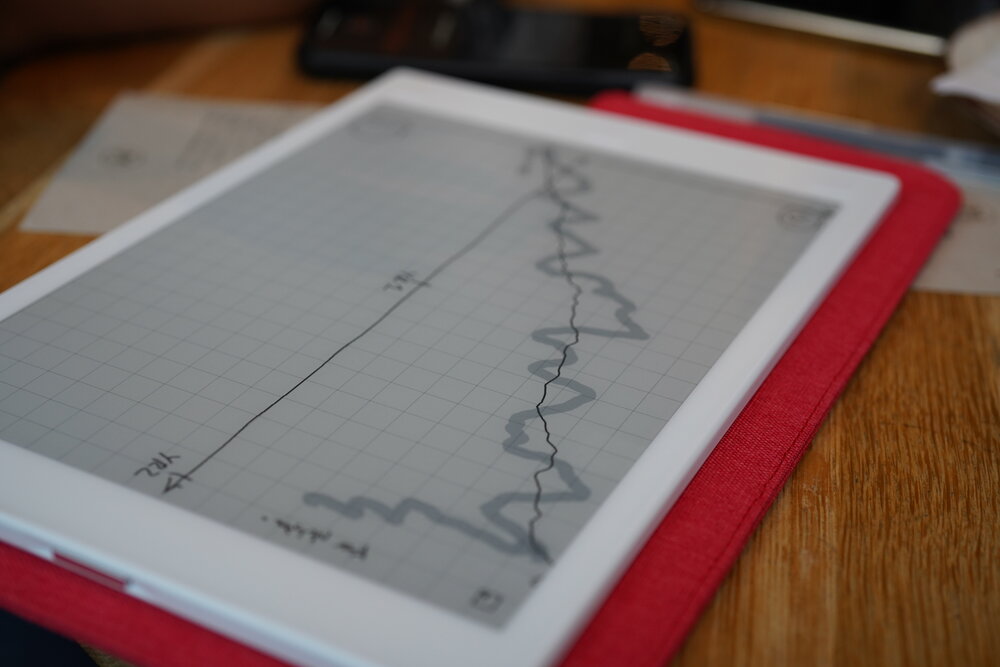 Happiness vs Stress.
Happiness vs Stress.
-
Focus on the emotional, not the physical. Existing preventive measures at the nursing home were focused on physical well-being, and not emotional well-being. Emotional support was ad-hoc and between co-workers. There was an opportunity to design for the emotional well-being of caregivers.
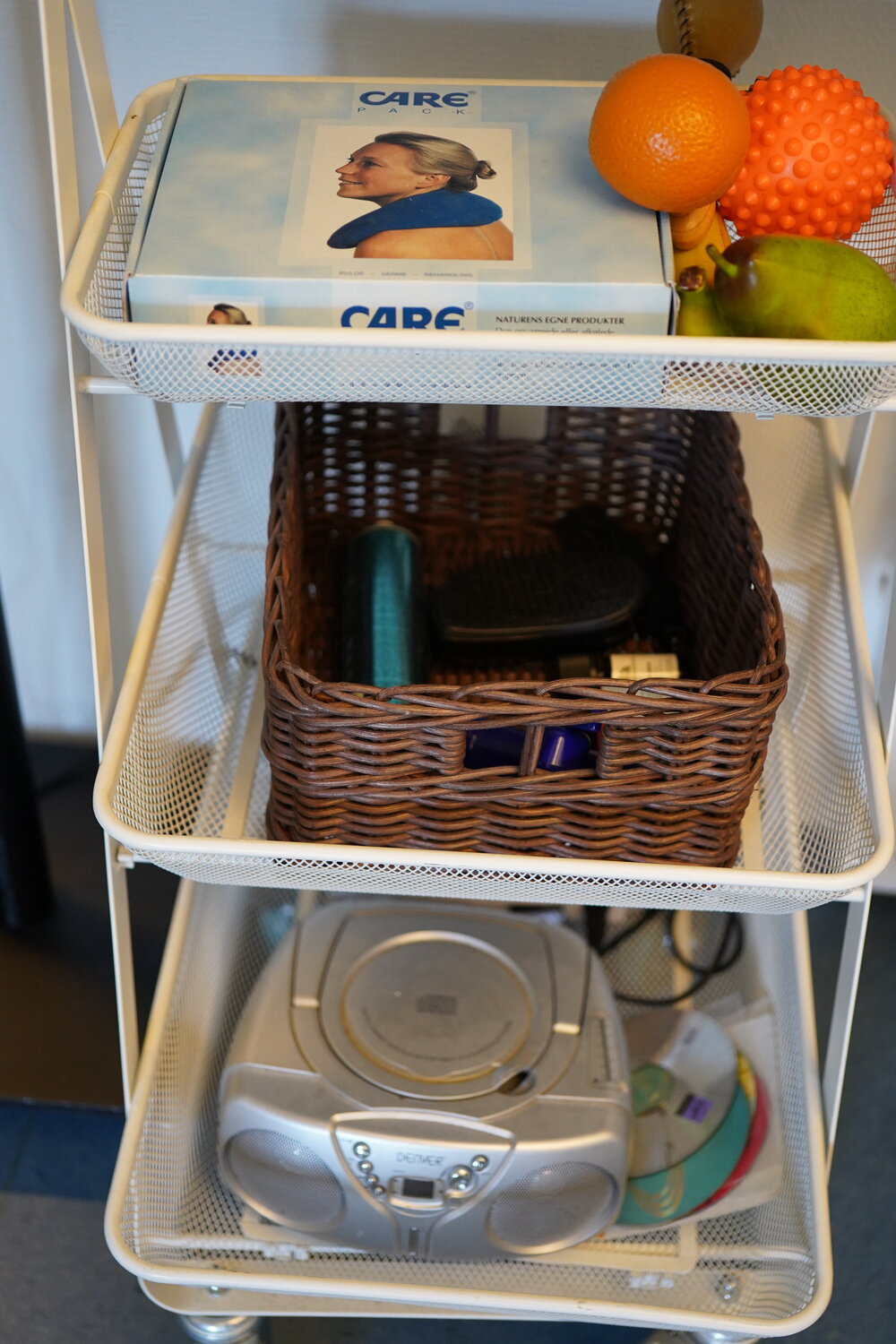 Picture of existing physical well-being tools for staff at nursing home.
Picture of existing physical well-being tools for staff at nursing home.
-
Reinforce social bonds & support amongst co-workers. Co-workers were an existing source of emotional support and well-being, but the support was currently ad-hoc and unstructured. This was an opportunity to deliberately systematize the social support amongst co-workers.
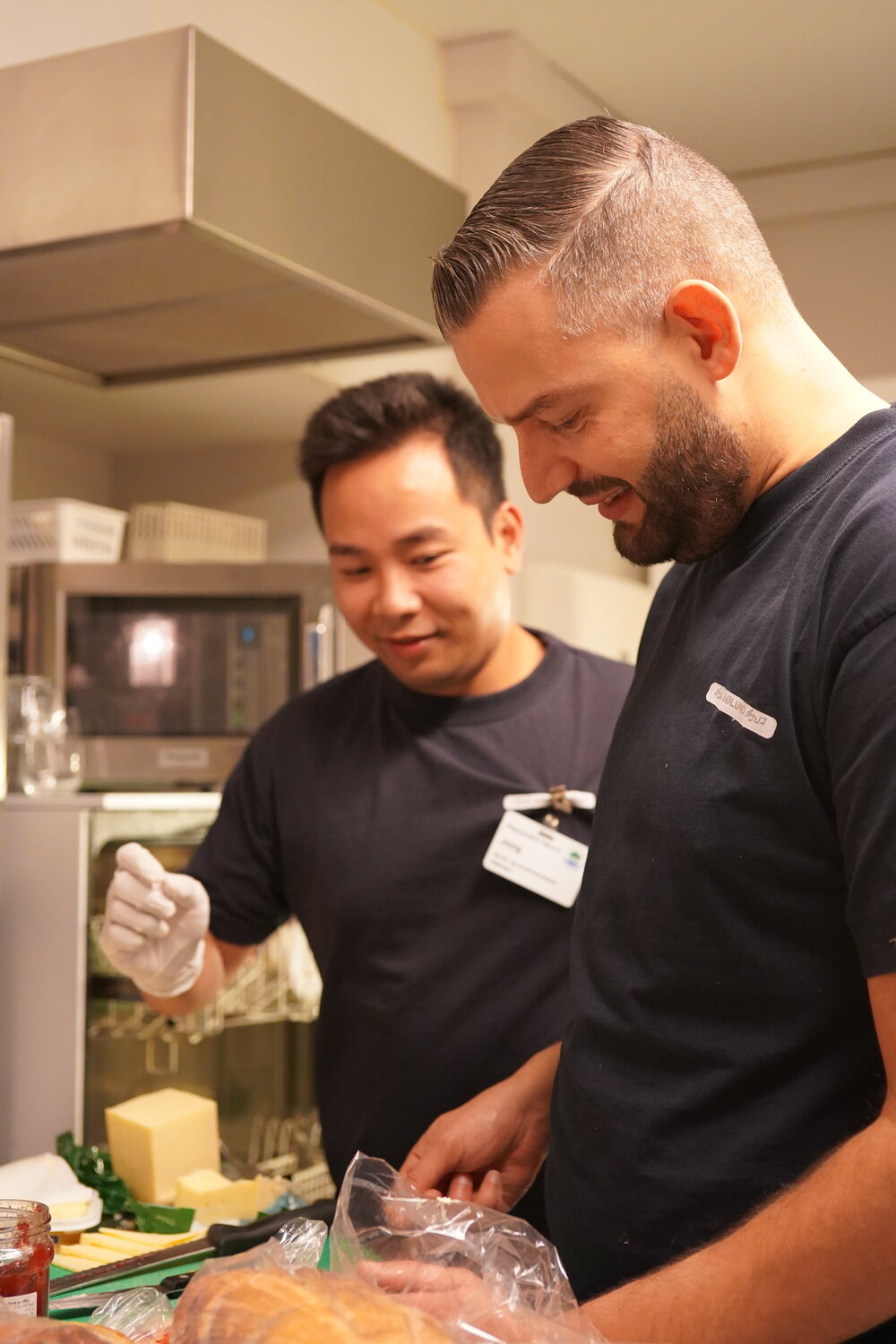 Strong bonds between co-workers.
Strong bonds between co-workers.
-
Tactile interactions to calm & soothe. A caregiver brought chestnuts during a shift, and throughout the evening, chestnuts were handed out to staff and residents alike; this had an observable calming effect on both staff and residents.
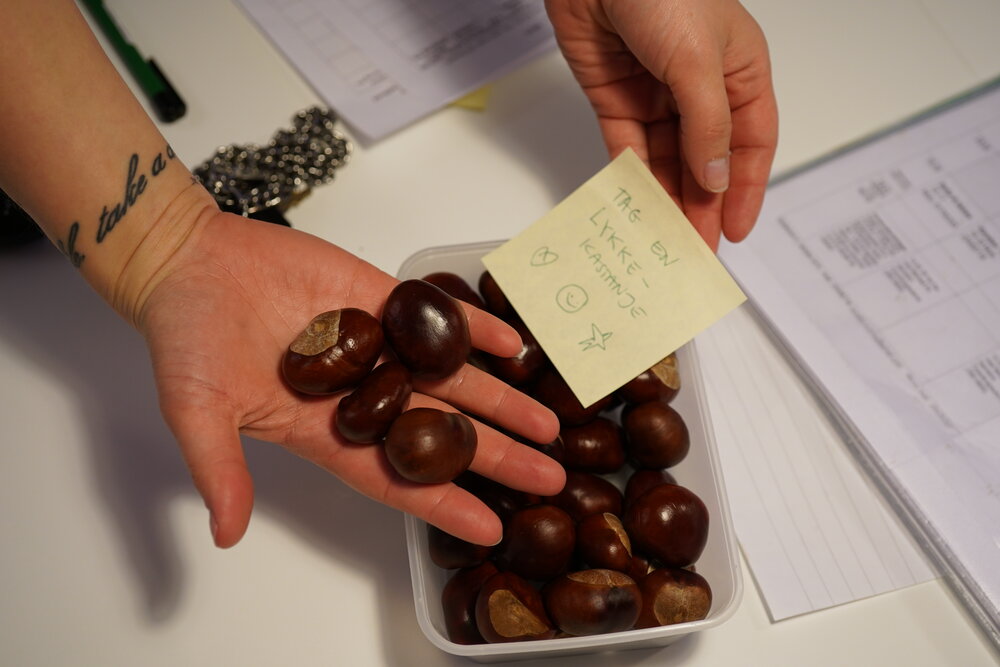 Using tactile objects like chestnuts (which have a special significance in Nordic culture).
Using tactile objects like chestnuts (which have a special significance in Nordic culture).
-
Non-written reflection mechanism. Almost all caregivers though about their work, and found it useful. However, five caregivers were given five notebooks to journal over two-weeks: this yielded only THREE pages of reflections. As one caregiver said to me, “If we had to write, it is just another task.” There was an opportunity to create non-written mechanisms that help caregivers reflect on their shifts and emotions.
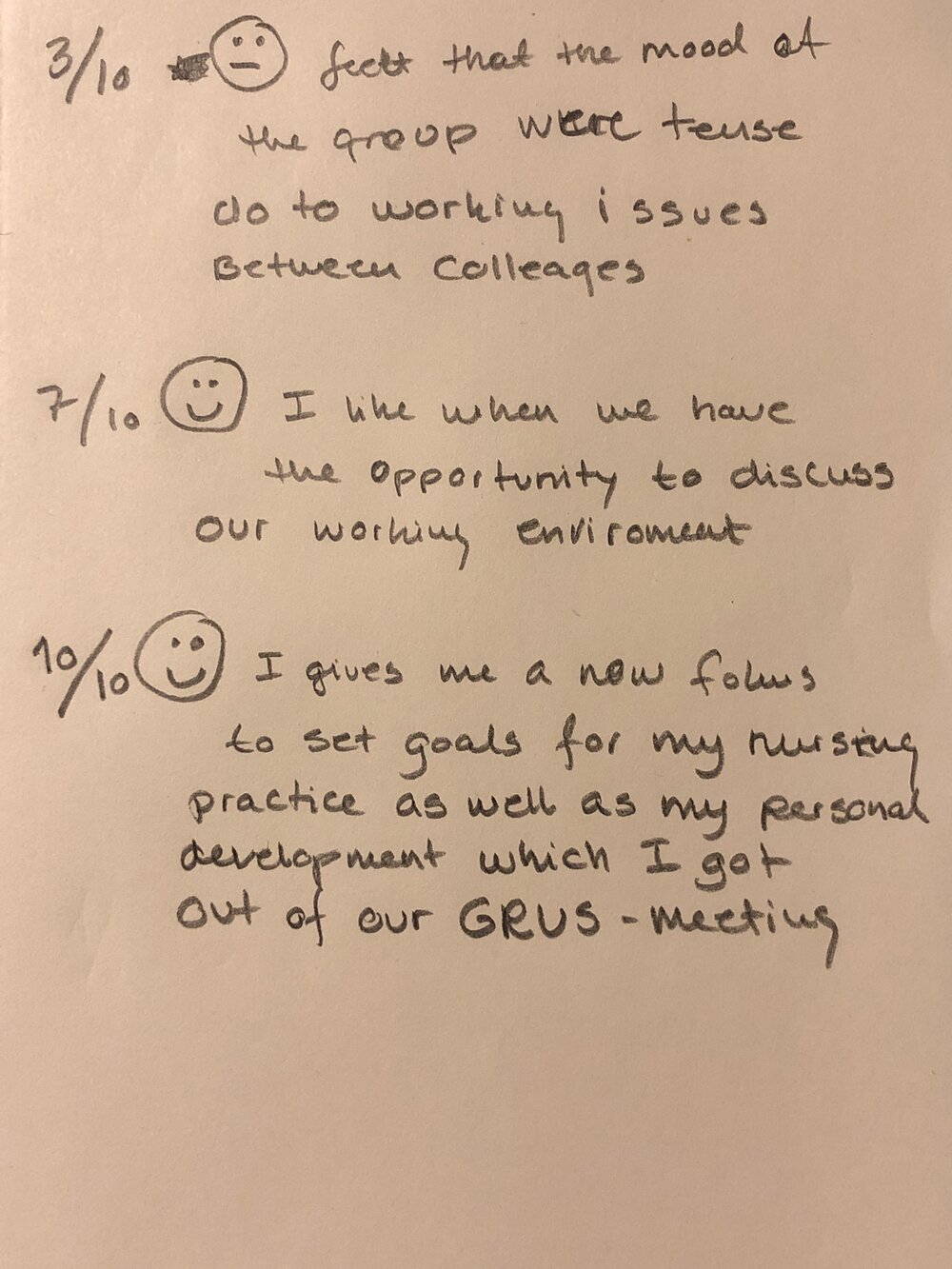 Reflecting was considered useful, but writing was “yet another task”
Reflecting was considered useful, but writing was “yet another task”